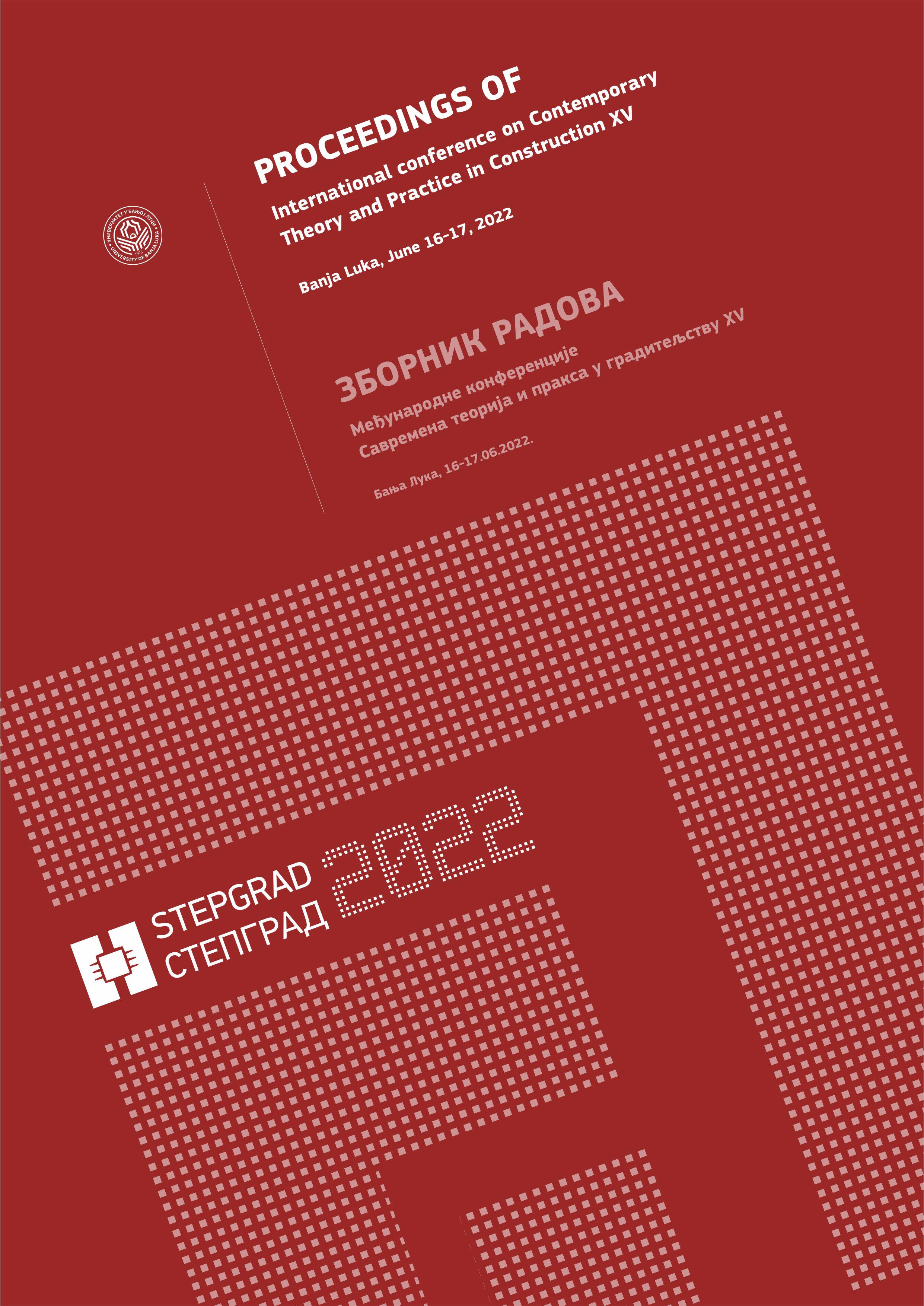MOBILE LASER SCANNING FOR DETAILED DIGITAL TOPOGRAPHIC MAPPING
DOI:
https://doi.org/10.7251/STP2215294LAbstract
Mobile Laser Scanning (MLS) is a technique characterized by high data acquisition efficiency and level of detail. However, a lot of information contained in the LiDAR point cloud is only implicitly available. Therefore, in order to create a digital topographic map from a large quantity of MLS survey data, it is necessary to define a methodology that requires a combination of various software tools. In general, the applied methodology mainly depends on the final product specifications (data model, accuracy, level of detail, etc.). This paper describes the standard methodology of creating a detailed digital topographic map using data collected by MLS, which proved to be two times faster than the conventional methods (total station or GNSS survey).
References
X. Luo, R. M. Bennett, M. Koeva, & C. Lemmen, “Investigating semi-automated cadastral boundaries extraction from airborne laser scanned data”, Land, 2017, 6.3: 60.
G. Vosselman, P. Kessels, & B. Gorte, “The utilisation of airborne laser scanning for mapping”, International Journal of Applied Earth Observation and Geoinformation, 2005, 6.3-4: 177-186.
G. Mandlburger, “A review of airborne laser bathymetry for mapping of inland and coastal waters”, 2020.
J. Hyyppä, H. Hyyppä, D. Leckie, F. Gougeon, X. Yu, & M. Maltamo, “Review of methods of small‐footprint airborne laser scanning for extracting forest inventory data in boreal forests”, International Journal of Remote Sensing, 2008, 29.5: 1339-1366.
A. Kukko, H. Kaartinen,J. Hyyppä, & Y. Chen, “Multiplatform mobile laser scanning: Usability and performance”, Sensors, 2012, 12.9: 11712-11733.
C. Wang, C. Wen, Y. Dai, S. Yu, & M. Liu, “Urban 3D modeling with mobile laser scanning: a review”, Virtual Reality & Intelligent Hardware, 2020, 2.3: 175-212.
P. Martínez-Carricondo, F. Agüera-Vega, F. Carvajal-Ramírez, F. J. Mesas-Carrascosa, A. García-Ferrer, & F. J. Pérez-Porras, “Assessment of UAV-photogrammetric mapping accuracy based on variation of ground control points”, International journal of applied earth observation and geoinformation, 2018, 72: 1-10.
W. Tan, N. Qin, L. Ma, Y. Li, J. Du, G. Cai, & J. Li, “Toronto-3D: A large-scale mobile lidar dataset for semantic segmentation of urban roadways”, in Proceedings of the IEEE/CVF conference on computer vision and pattern recognition workshops, 2020. p. 202-203.
N. Suttisangiam, & S. Bamrungpruk, “Software-based Timing Synchronization for Point Cloud Reconstruction”, in 2018 International Conference on Intelligent Informatics and Biomedical Sciences (ICIIBMS), IEEE, 2018. p. 37-41.
C. I Miller, J. J. Thomas, A. M. Kim, J. P. Metcalf, & R. C. Olsen, R. C., “Application of image classification techniques to multispectral lidar point cloud data”, in Laser Radar Technology and Applications XXI, SPIE, 2016. p. 286-297.

